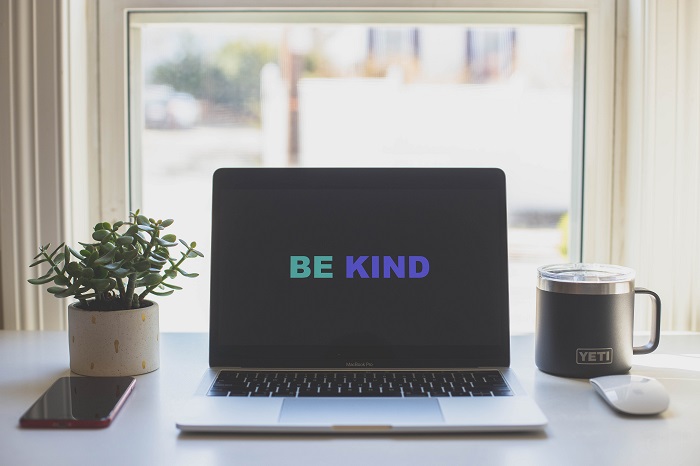- MN ABE Connect
- Archive
- COVID-19 and Stress Management Tips for ABE Staff
 April 7, 2020
April 7, 2020
COVID-19 and Stress Management Tips for ABE Staff
Wendy Sweeney, MA, LP, PANDA ManagerThe COVID-19 pandemic has created fear and uncertainty in Minnesota and around the world about our safety, health and future, which may be impacting people’s mental health. Anxiety and stress rise when there is change in people’s lives, particularly when it is scary and the end is unknown. Aside from the fear of getting the virus, testing positive for it or knowing someone who has it, some people may be experiencing additional layers of anxiety – such as, worries about job security, loss of income, finances, juggling work from home, taking care of children and inability to leave the house. People may react in unhealthy ways to the stress. Some unhealthy methods may include substance abuse, domestic abuse, verbal abuse, hoarding, blaming others, or thoughts about not wanting to live.
There are many healthy methods to help cope with stress during these uncertain times. We all need to be reminded that this too shall pass. We are in this together and we can help each other get through it. Perspectives can also help manage uncertainty. Many of you may know someone who has fought in a war. For decades, our veterans put their lives in danger in order to preserve our democracy. Our governor has asked us to stay home and orchestrate distance learning for our students. This is not an easy task but compared to fighting in a war, it is manageable. Thank you to all ABE staff for quickly and efficiently changing instruction to a distance learning format to keep us all safe. You are all heroes in the war on coronavirus, along with our health care providers, first responders, grocers and other “essential” workers. Give yourself a pat on the back and be kind, patient, and understanding to yourselves and others, as was so well said in a Star Tribune editorial about educators transforming instruction overnight.
Managing stress and anxiety
 The following are suggestions to reduce anxiety, manage stress, and find hope:
The following are suggestions to reduce anxiety, manage stress, and find hope:
- Focus on what you CAN control and let go of those things you cannot. For instance, take social distancing seriously. It is saving lives and is for the greater good.
- Stay in the present as much as possible and avoid thinking ahead. One day at a time.
- Limit the amount of news consumed about the virus and seek reputable sources.
- Learn deep breathing skills to calm and relax the body. When feeling stress and anxiety the body tenses up. There are several cell phone apps to reduce anxiety. One example is Anxiety Helper (more cell phone apps in resources below).
- Go for walks each day to enjoy all of the nature around you and the beginnings of spring to help you stay in the present. Exercise helps raise endorphins (the feel-good chemicals in your brain).
- Meditation and yoga are good methods to decompress and relax. Many options are available online, such as Calm.
- Keep a routine each day as much as possible. Routines are comforting, reduce chaos and help people feel they have accomplished something.
- Say “NO” to obligations when overextended. Don’t take on more than you can handle. Turn off the computer at a specified time each day and take regular breaks.
- Reach out to your students, family, friends and co-workers. Now that you have had crash courses on technology, use Zoom, WhatsApp, or FaceTime (for Apple devices) to connect with others. Or simply pick up the phone and call someone! We all need support from each other as we learn how to adapt to our “new normal”. Build community by asking someone if they need anything, finding out how they are doing, or sharing a laugh. Have a family or friends game night or happy hour via technology.
- Acknowledge your fear and anxiety. Talk about your feelings with someone you trust.
- Write down 2-3 positive things that happen each day. By focusing on the positive you are more apt to reduce negative thoughts.
- Set a goal to get a project done or start a hobby. Try a new recipe, learn a new language, read a book, clean out a closet or take up photography are some examples.
- Think about donating blood or dropping off food to your local food shelf. We can all do simple things to support each other. By helping others, you are contributing to being part of the solution.
- Do not hesitate to seek professional support, if needed. Mental health is considered an essential service and most mental health clinics are open but are also offering telehealth and phone therapy sessions (see resources below).
- Look for the silver linings around you, despite the challenges we are facing. Have you learned anything new during the shelter in place? Some things may include:
-
- Technology is a great tool to use long term (even if you had to learn it in breakneck speed).
- We are not weak if we ask for support from others.
- Our relationships with family, friends and co-workers are most important.
- We all need each other, and our lives are interdependent.
- A slower pace of life is beneficial.
- Reaching out and having compassion for others feels satisfying.
Resilience and stress management
Resilience is a skill which can help students adapt to the changes due to COVID-19. The American Psychological Association defines resilience as the process of adapting well in the face of adversity, trauma, tragedy, threats or significant sources of stress. Research shows those who are resilient feel valued, have a sense of belonging, have meaning and purpose in their lives, have a strong support network, are determined, and have a strong spirituality.
Students may not be aware of resilient methods to reduce and manage the stress in their lives, particularly now, due to the virus. Consider the following ideas along with suggestions from the list above:
- Teach students about how to create balance in their lives, including how to prioritize, do self-care and decompress each day.
- Teach problem solving skills and give real life scenarios in which students can discuss common situations and solutions.
- Talk about the meaning of resilience and ask students to share stories about when they have overcome obstacles in their lives and how to apply those skills now during COVID-19.
- Ask students to view videos of others who have overcome trauma in their lives to provide hope. One inspirational suggestion is a video about Malala Yousafzai.
- Connect students to local resources to file for unemployment, find food shelves, and receive community support.
- Refer students to a professional, if anxiety/stress persists or if they make any suicidal comments (see below).
Additional PANDA resources
PANDA has mental health resources and stress management tools related to COVID-19 available for you and your students on our website. Resources include free crisis numbers, cell phone apps, tele-health resources and local mental health providers. Go to PANDA’s website at: https://pandamn.org/mental-health/resources-6/ (This link is also available on the COVID-19 & Distance Education Schoology group).
Stay healthy and safe everyone! Feel free to contact PANDA staff with any concerns or resource needs at [email protected]
Newsletter Signup
Get MN ABE Connect—the official source for ABE events, activities, and resources!
Sign UpArticle Categories
- ABE Foundations/Staff Onboarding
- ACES/Transitions
- Adult Career Pathways
- Assessment
- CCR Standards
- Citizenship
- COVID-19
- Cultural Competency
- Digital Literacy/Northstar
- Disabilities
- Distance Learning/Education
- ELA
- Equity/Inclusion
- ESL
- HSE/Adult Diploma
- Listening
- Math/Numeracy
- Mental Health
- Minnesota ABE
- One-Room Schoolhouse/Multilevel
- Professional Development
- Program Management
- Reading
- Remote Instruction
- Science
- Social Studies
- Speaking/Conversation
- Support Services
- Teaching Strategies
- Technology
- Uncategorized
- Volunteers/Tutors
- Writing